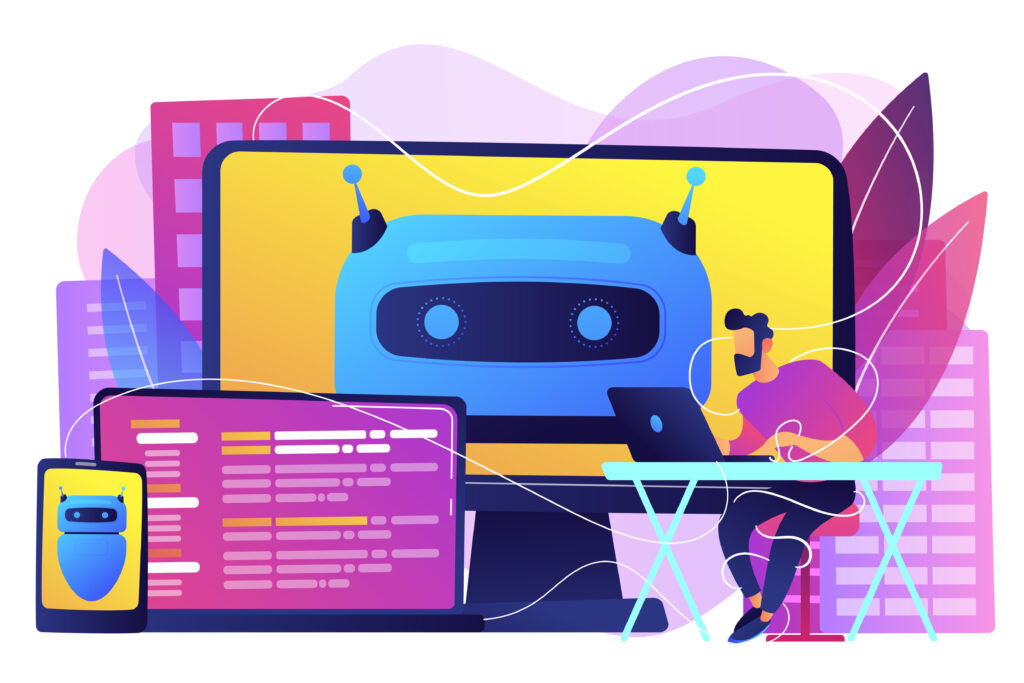Best Practices for Machine Learning Model Development

It is always important to learn about machine learning model development best practices. With AI facing a rapid growth it is high time to adopt other new business environment. Here are some of the best practoces that you can follow for machine langue development.
1. Clearly Define the Problem
The initial step in creating a machine learning model is to clearly articulate the problem you aim to solve. A well-defined problem serves as a roadmap for the entire development process, influencing aspects like data gathering, feature engineering, model selection, and evaluation.
Here are some best practices to follow:
- Understand the Objective: Be clear about what the model is intended to accomplish, whether it’s predicting sales, detecting fraud, or classifying images.
- Specify Performance Metrics: Determine how you will measure success. Common metrics include accuracy, precision, recall, and F1 score. Different types of problems will require different metrics for assessing model performance.
- Frame the Problem Correctly: Identify whether your problem is a classification, regression, or clustering task. Properly framing the issue will help you choose the right algorithms and evaluation methods.
2. Gather and Prepare High-Quality Data

Data is fundamental to any machine learning project. Even the most advanced algorithms will struggle without clean, relevant, and adequate data. Here are some best practices for data collection and preparation:
- Collect High-Quality Data: Make sure the data is accurate, representative, and large enough to address the problem at hand. This may involve gathering new data or utilizing existing datasets.
- Data Preprocessing: Clean the dataset by addressing missing values, removing outliers, and fixing errors. Normalize or scale numerical features and encode categorical variables as needed.
- Feature Engineering: Develop new features or modify existing ones to enhance the model’s learning capability. This can include combining features, creating interaction terms, or extracting significant features from raw data, such as generating time-related features from dates.
- Data Splitting: Divide your data into training, validation, and test sets. This ensures that the model is trained on one portion of the data while being evaluated on another, helping to prevent overfitting.
3. Select the Right Model
Choosing the right algorithm is vital for the success of your machine learning model. Here are some best practices for model selection:
- Start with Simpler Models: Begin with straightforward models, such as linear regression or decision trees. If needed, you can gradually progress to more complex models like neural networks. This approach helps you gain a solid understanding of the data before tackling more advanced techniques.
- Understand the Model’s Assumptions: Each machine learning model comes with its own set of assumptions (for example, linearity in linear regression). Ensure that these assumptions align with your data and the specific problem you are addressing.
- Consider Interpretability: The ability to interpret the model’s results may be crucial, depending on the context. In fields like healthcare or finance, models that are easy to explain may be favored over more complex “black-box” models, such as deep learning algorithms.
4. Train the Model Effectively
Training the model is a central part of the machine learning process. Here are some best practices for effective model training:
- Hyperparameter Tuning: Most machine learning models have hyperparameters that influence how the model learns (for example, the learning rate in neural networks or the depth of a decision tree). Utilize techniques like grid search or random search to identify the optimal hyperparameters for your model.
- Cross-Validation: Implement cross-validation methods, such as k-fold cross-validation, to evaluate your model’s performance more reliably. This approach helps ensure that the model’s performance is not merely a result of a specific data split and that it can generalize well to new, unseen data.
- Monitor Overfitting: Overfitting happens when the model learns the training data too thoroughly, resulting in poor performance on new data. To mitigate this, use regularization techniques like L1/L2 regularization or dropout (for neural networks) to help prevent overfitting.
- Feature Selection: Focus on selecting only the most relevant features to simplify the model and reduce the risk of overfitting. Techniques such as recursive feature elimination (RFE) or assessing feature importance from tree-based models can assist in this selection process.
5. Evaluate the Model’s Performance

Assessing the performance of a machine learning model is crucial for understanding how well it can generalize to new, unseen data. Here are some best practices for evaluation:
- Use Multiple Evaluation Metrics: Depending on the nature of the problem, employ a range of metrics. For instance, in a classification task, metrics such as accuracy, precision, recall, and F1 score provide a more comprehensive view of performance than accuracy alone.
- Confusion Matrix: Utilize a confusion matrix to visualize the performance of your classification model. It displays true positives, false positives, true negatives, and false negatives, helping you understand where the model is succeeding or struggling.
- Check for Bias and Fairness: Ensure that your model does not unfairly discriminate against particular groups. This is especially important for models applied in sensitive areas like hiring, lending, and law enforcement, where fairness is critical.
6. Address Bias and Variance
Bias and variance are two major sources of error in machine learning models:
- Bias occurs when a model makes strong assumptions about the data, leading it to miss underlying patterns (resulting in underfitting).
- Variance arises when a model is overly sensitive to the training data, capturing noise as if it were a pattern (leading to overfitting).
To strike a balance between bias and variance, consider the following strategies:
- Use Simpler Models: If you notice signs of overfitting, opting for simpler models can help reduce variance.
- Use More Complex Models: If you encounter high bias, consider using more complex models, such as polynomial regression, to better capture intricate relationships in the data.
- Employ Regularization Techniques and Cross-Validation: These methods can assist in finding an optimal balance between bias and variance, helping your model generalize better to new data.
7. Model Deployment and Monitoring

After training and evaluating a machine learning model, the next crucial step is deployment. Here are some best practices to follow:
- Versioning and Reproducibility: Keep a record of the model version, the data used for training, and the configuration settings. This practice ensures that you can reproduce the model in the future and track any performance changes over time.
- Deployment Pipeline: Establish a pipeline that automates the processes of training, testing, and deploying the model. This helps scale and streamline the machine learning lifecycle.
- Monitor Model Performance in Production: Models can deteriorate over time due to changes in data (known as data drift). It is vital to continuously monitor the model’s performance in a production environment and periodically retrain it with updated data to maintain its accuracy.
8. Continuous Improvement and Iteration
The development of machine learning models is an iterative process. Here are some best practices to ensure ongoing improvement:
- Feedback Loops: Collect feedback from users and stakeholders to pinpoint areas for enhancement. This may involve retraining the model with new data or making adjustments to the features used.
- Iterate on the Model: Even after deployment, consistently work on improving the model by refining features, experimenting with new algorithms, or tuning hyperparameters. This iterative approach helps enhance the model’s performance over time.
9. Ethical Considerations and Transparency
As machine learning models are increasingly used across various sectors, addressing ethical considerations is crucial. Here are some best practices to follow:
- Bias and Fairness: Ensure that the model is free from bias and does not produce unfair or discriminatory predictions. This may involve testing the model on different demographic groups to confirm that it operates equitably.
- Explainability: Offer stakeholders clear explanations about how the model functions and how predictions are generated. This is particularly important in fields like finance, healthcare, or law, where understanding the decision-making process is essential.
- Accountability: Establish clear accountability for the decisions made by the model, especially in situations where those decisions affect people’s lives, such as in credit scoring or hiring processes.
[Want to learn more about machine learning model development best practices? Click here to reach us.]
Conclusion
In conclusion, developing effective machine learning models is a complex yet rewarding endeavor that requires adherence to best practices throughout the entire lifecycle. From clearly defining the problem to collecting high-quality data, selecting the right model, and continuously monitoring performance, each step plays a crucial role in ensuring the accuracy, reliability, and ethical integrity of the model. As organizations increasingly leverage machine learning to drive innovation and make informed decisions, it becomes essential to integrate robust support and development services.
Bobcares offers specialized AI development and support services that can assist businesses in navigating these challenges. With their expertise, organizations can enhance their machine learning initiatives by ensuring that models are not only built effectively but also maintained and improved over time. By partnering with Bobcares, companies can focus on their core objectives while benefiting from tailored solutions that optimize their machine learning efforts and foster sustainable growth in an ever-evolving technological landscape.







0 Comments